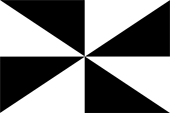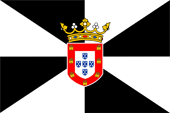Ceuta |
|
|
|
| Übersicht – Contents: | |
Diese Seite ist Teil des Projektes
Ceuta |
|
|
|
| Übersicht – Contents: | |
| Prolog: | |
| Ceuta ist ein Freihafen und ein bedeutender spanischer Militärstützpunkt. Hier sind unter anderem Kontingente der spanischen Legion stationiert. Es ist ein Knotenpunkt des Verkehrs zwischen Afrika und Europa. Die Wirtschaft ist mittelständisch geprägt, vor allem im Bereich des Fischfangs, der Lebensmittelindustrie (Fischverarbeitung) und der Textilindustrie. Weiterhin gibt es Werften. Die Handelbeziehungen erstrecken sich allerdings nur nach Spanien, zu den Kanarischen Inseln, den Balearen und nach Melilla. Ceuta gehörte bis 1995 zur spanischen Provinz Cádiz, und ist heute eine Automome Stadt innerhalb Spaniens. | Ceuta is a free port
and an important Spanish military base. Here are stationed among other contingents of the
Spanish Legion. It is a hub of transport between Africa and Europe. The economy is marked by medium-sized businesses, especially in fishing, food industry (fish processing) and the textile industry. Furthermore, there are shipyards. Trade relations extend only to Spain, the Canary Islands, the Balearic Islands and Melilla. Ceuta was part of the Spanish province of Cadiz to 1995, and is today an Autonomous City within Spain. |
| Das Gebiet von Ceuta ist ein Restgebiet der ehemaligen spanischen Kolonie Spanisch-Marokko, die von 1912 bis 1956 als spanisches Protektorat in Nordmarokko bestand, und das bis auf die Plazas de Soberanía (Presidios) aufgegeben wurde. Die Presidios waren seit der frühen Neuzeit in spanischem Besitz befindliche, damalige Deportationsplätze für Sträflinge an der Nordküste Marokkos. Zu den Presidios gehören noch bis heute folgende Besitzungen: | The area of Ceuta is a
residual area of the former Spanish colony of Spanish Morocco, which existed from 1912 to
1956 as a Spanish protectorate in northern Morocco, and was given up except the Plazas de
Soberanía (Presidios). The Presidios had been from the early modern period Spanish possession, then deportation places for convicts on the north coast of Morocco. The Presidios are still until today the following possessions: |
|
• Ceuta (84.777 Ew.), • Melilla (86.487 Ew.), • Perejil (unbewohnt), • Peñon de Velez de la Gomera, • Alhucemas-Inseln, • Chafarinas-Inseln (letztere drei zusammen 300 Ew.) |
• Ceuta (84.777 inhabitants) • Melilla (86.487 inhabitants) • Perejil (uninhabited) • Penon de Velez de la Gomera • Alhucemas Islands • Chafarinas Islands (the latter three alltogether 300 inhabitants) |
| Manchmal werden die Plazas de Soberanía auch immer noch als Spanisch-Nordafrika bezeichnet. Marokko erhebt Anspruch auf die Plazas de Soberanía und somit auch auf Ceuta. | Sometimes the Plazas de
Soberanía are even called as Spanish North Africa. Morocco claims the Plazas de Soberanía and in this way Ceuta too. |
| Am 10.07.2002 besetzte Marokko die zu Spanisch-Nordafrika gehörende, in der Nähe von Ceuta gelegene, unbewohnte Insel Perejil (=Petersilieninsel), um seine Ansprüche auf dieses Gebiet zu unterstreichen. Spanien hat am 17.10.2002 im Rahmen einer militärischen Operation die auf der Insel Perejil stationierten marokkanischen Soldaten vertrieben und die Insel wieder übernommen ("Petersilienkrieg"). In Folge diplomatischer Querelen einigte man sich kurzzeitig darauf, die Insel als "neutrales Gebiet" zu betrachten. Jedoch stellte die Annexion durch Marokko einen Angriff auf ein NATO-Land und auf die Europäische Union dar, und ehe Bündnispflichten aktiviert wurden einigte man sich darauf, den Status vor dem 10.07.2002 wieder herzustellen. | On 10th of July in 2002
Morocco occupied the to Spanish North Africa belonging, and near Ceuta situated,
uninhabited Perejil Island (= Parsley Island), to underline his claims to the territories. On 17th of October Spain drove as part of a military operation the on Perejil Island stationed Moroccan soldiers and took over the island again ("parsley war"). As a result of diplomatic wrangling, an agreement was reached briefly, to nominate the island as "neutral territory". However, the annexation by Morocco was an attack on a NATO country and on the European Union, and before treaty obligations have been activated, the restore of the state before the 10th of July in 2002 was agreed. |
| Quelle/Source: Länder der Erde, Wikipedia (D), Volker Preuss | |
Flaggen – Flags: |
|
 |
Landesflagge – civil flag, Quelle/Source nach/by: Flags of the World |
 |
Dienstflagge – official flag, Quelle/Source nach/by: Flags of the World |
Bedeutung/Ursprung der Flagge – Meaning/Origin of the Flag: |
|
| Ceuta wurde im Jahre 1415 durch die Portugiesen erobert, und fiel erst im Jahre 1580 an Spanien. Die Flagge von Ceuta geht daher in ihrer Gestaltung auf Portugal zurück. Die Flagge von Ceuta ist die Flagge der spanischen Stadt Ceuta, schwarz-weiß geständert mit dem Wappen der Stadt in der Mitte. Es ist ein Abbild der Flagge von St. Vincent (der Stadtheilige von Lissabon) bzw. der Stadt Lissabon selbst und es handelt sich um die Farben des Dominikanerordens. Diese Flagge war sogar einige Zeit lang als Flagge von Portugal im Gebrauch. Die Dienst- oder Behördenflagge zeigt sogar das portugiesische Staatswappen in der Mitte, allerdings sind die goldenen Burgen Kastilliens ein wenig anders angeordnet. Das Schild wird von einer Markgrafenkrone gekrönt. |
Ceuta was conquered by the Portugese in the year 1415, and came to Spain not
until the year 1580. The flag of Ceuta goes from there back to Portugal. The flag of Ceuta is the flag of the Spanish City of Ceuta, consisting of a black and white gyronny with the city's coat of arms in the middle. It is an image of the flag of St. Vincent (the city saint of Lisbon) or the city of Lisbon itself and these are the colours of the Dominican Order. This flag was even used as the flag of Portugal for some time. The official flag for offices and authorities even shows the Portuguese national coat of arms in the middle, but the golden castles of Castile are arranged a little differently. The shield is crowned by a margrave crown. |
| Quelle/Source: Wikipedia (ES) | |
| Landkarte von Spanisch-Nordafrika – Map of Spanish North Africa: |
|
| Landkarte von Ceuta – Map of Ceuta: |
|
Zahlen und Fakten – Numbers and Facts: |
|
|
|
|
|
|
|
|
|
|
|
|
|
|
|
Geschichte: |
| 1100–600
v.Chr. · phönizische Stadt "Abyle" bis 146 v.Chr. · zu Karthago 42 · zum Römischen Reich, Stadt "Septa" 395 · zum Weströmischen Reich 554 · Eroberung durch das Byzantinische Reich ca. 600 · Abzug der Byzantiner 618 · zum Westgotenreich 711 · islamisch-arabische Eroberung, zum Omajjaden-Kalifat, Name: "Sibta" 1309 · zum Königreich Aragón 1310 · zum Emirat Granada 21.08.1415 · Eroberung durch Portugal 01.12.1640 · an Spanien 1668 · die Insel Perejil wird spanischer Besitz 1847–1912 · die Spanischen Besitzungen an der Nordküste Afrikas (Presidios) werden als Generalkapitanat zusammengefasst 1912–1956 · Ceuta ist Teil von Spanisch-Marokko 1956 · Ceuta wird der spanischen Provinz Cádiz angeschlossen 14.03.1995 · Autonome Stadt Ceuta 2002 · "Petersilienkrieg" mit Marokko |
History: |
| 1100–600
B.C. · phoenician city "Abyle" to 146 B.C. · to Karthago 42 A.D. · to the Roman Empire, city "Septa" 395 · to the West Roman Empire 554 · conquest by the Byzantine Empire ca. 600 · withdrawal of the Byzantians 618 · to the Empire of the Visigoths 711 · Islamic-Arabian capture, to the Umayyad Caliphate, name: "Sibta" 1309 · to the Kingdom of Aragón 1310 · to the Emirate of Granada 21st of August 1415 · conquest by Portugal 1st of December 1640 · to Spain 1668 · Perejil Island becomes a Spanish possession 1847–1912 · the Spanish possessions at the northern coast of Africa become united as a captaincy-general 1912–1956 · Ceuta is a part of Spanish Morocco 1956 · Ceuta comes to the Spanish Province of Cádiz 14th of March 1995 · Autonomous City of Ceuta 2002 · "Perejil War" with Morocco |
| Quelle/Source: Atlas zur Geschichte, World Statesmen, Wikipedia (D) |
Ursprung des Landesnamens – Origin of the Country's Name: |
|
| Die erste Erwähnung der Siedlung ist die phönizische Stadt "Abyle". Die alten Griechen nannten Ort später "Heptá Adélphia", was "Sieben Brüder" heißt, denn die Stadt liegt auf sieben Hügeln. Die Römer übernahmen die griechische Bezeichnung und übersetzten wörtlich "Septem Frates" (Sieben Brüder), in der Kurzform wurde die Stadt "Septa" genannt. Die Araber nannten sie "Sibta", und die Portugiesen gaben ihr den Namen "Ceuta", den sie bis heute behalten hat. | The first mention of
the settlement is the Phoenician city "Abyle". The ancient Greeks called the
place later "Hepta Adelphia", what means "Seven Brothers", because the
city is built on seven hills. The Romans adopted the Greek name and the translated word
for word "Septem Frates" (Seven Brothers), in the short form the city was called
"Septa". The Arabs called it "Sibta" and the Portuguese gave it the
name "Ceuta", which it has kept to this day. |
| Quelle/Source: Atlas zur Geschichte, Wikipedia (D), Handbuch der geographischen Namen | |